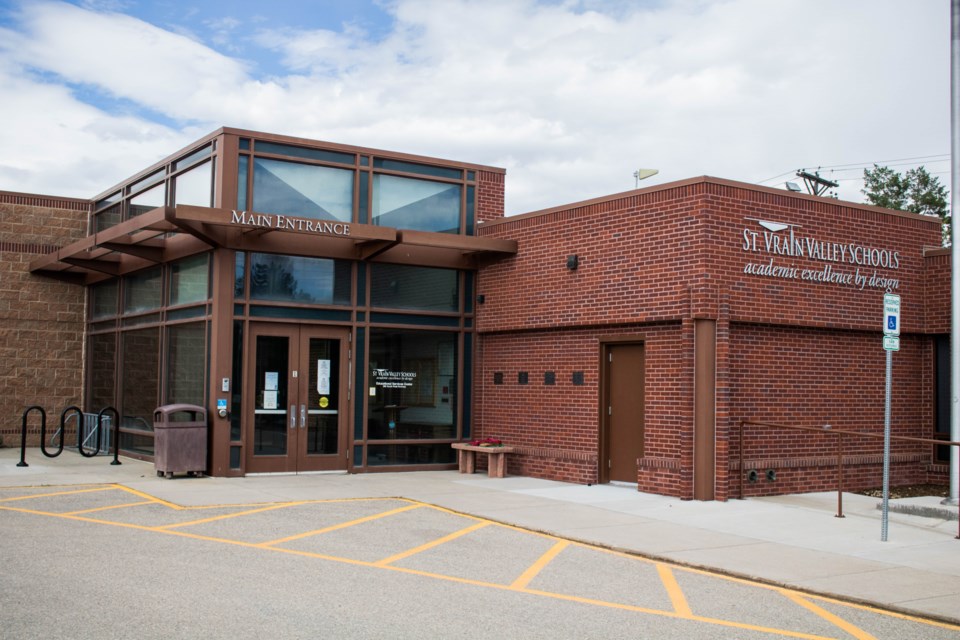Enrollment in St. Vrain Valley School District declined slightly this year, but district officials believe the drop in numbers can partially be attributed to the coronavirus pandemic and the shift this semester from a hybrid model to fully remote learning.
Enrollment is down 1,105 students this year compared to last, SVVSD Planning Director Scott Toillion told the school board at its meeting last week.
But that decline pales in comparison to what some other districts have seen, according to Toillion, who said he has talked with 10 other districts, including SVVSD’s neighbors, who have seen a combined loss of almost 18,000 students. Their losses, he said, were about 10% of enrollment, while SVVSD’s decline is only about 3%.
By grade, the district has seen the most significant losses in its preschool and kindergarten numbers, which also have shown the greatest decreases statewide, Toillion said. He said he and officials in other school districts have speculated those dips are being caused by parents opting to hold their kids out during remote learning with the intent of bringing them back next year for in-person instruction.
“We know … a lot of parents are probably keeping kindergartners out and will bring them back when they can have a more traditional school setting,” he said.
Enrollment in preschool is down by 580, while kindergarten is down 231 students, according to a presentation Toillion gave to the board. In first through eighth grades, declines varied from 23 to 177 students, while there was a 109-student increase in ninth grade and a 56-student increase in high school juniors. Tenth and 12th-grade enrollment fell by 24 and 27 students, respectively, according to Toillion’s presentation to the board.
Superintendent Don Haddad said he understands why some parents would make the decision not to enroll preschoolers or kindergartners this year and he, too, expects “the numbers will come back around pretty quickly.”
Tracking those students lost on SVVSD rolls is tricky, and Toillion said for a fair number of them it is “hard to identify where they’ve gone.”
“It’s a hard thing to track down students at times,” he said. “A lot of them don’t leave forwarding information.”
That problem is not unique to the district, though, with Toillion telling the school board that other districts that lost enrollment also are unable to identify where those students have gone.
Haddad told the school board that SVVSD’s focus on tracking engagement during remote learning was aimed at preventing some of those question marks.
“By design, last spring into fall, we really paid close attention to engagement,” which he said was district administrators’ way of staying connected to students and that other districts that have seen enrollment decline were not doing the same. “Those are the districts that lost 10% of their children,” Haddad said.
“Monitoring engagement was one of the ways in which we are staying connected to our students and our families because we knew that what we’re seeing now in these other districts — 20% to 30% of their kids gone — there was no communication with them since last spring. That’s born out of not tracking engagement.”
Birth rates in SVVSD communities continue to go up, though, which translates to kindergarten enrollment five years in the future, Toillion said, adding hopefully “when things are back to normal,” the district will see a bounceback in kindergarten and first grade numbers.
He also said the district and others are anticipating a similar bounceback in which a number of students who switched to home school will return as schools return to normal settings.
Enrollment numbers play a role in a number of district decisions, such as staffing, as well as in how much funding it receives from the state. Each year, districts’ “October counts” — one-day tallies, which this year were taken on Oct. 1 — are used to determine how much money each district receives based on enrollment.
With state per-pupil funding for this year at $7,418.80, the loss of those 1,105 students could have added up to a loss of $8.6 million in state funding, according to a presentation to the board by SVVSD Budget Director Tony Whiteley. However, because the Colorado School Finance Act includes a provision for declining enrollment averaging, the financial hit won’t be quite so big. The provision allows districts’ funded pupil count to be adjusted to the highest of the average of the last two, three, four or five years, Whiteley told the board. For SVVSD, the average of the last three years is highest, and it cuts the enrollment decrease by nearly half, he said.
SVVSD’s certified funded pupil count is 30,736.7, a decline of 564 versus the actual 1,105 students, which adds up to a decline of $4.4 million in state funding, Whiteley said.
As school districts across the state see enrollment numbers dip, it essentially frees up state money that did not go to per-pupil funding, he said. What state leaders will do with those savings remains to be seen, but Whiteley said indications are they are likely to be saved and allocated in next year’s budget rather than rolled into an increased per-pupil amount this year or spent elsewhere.

